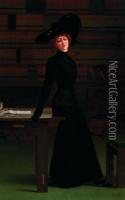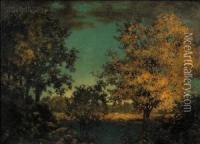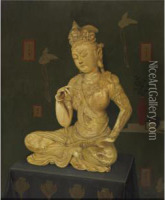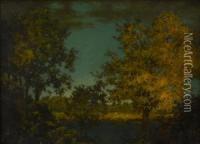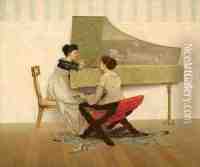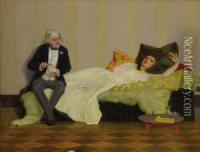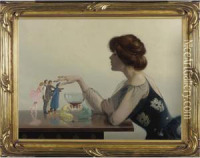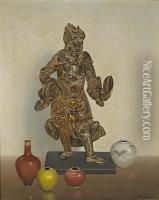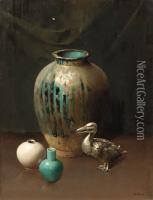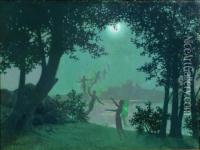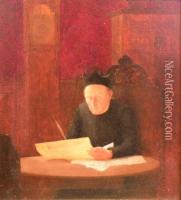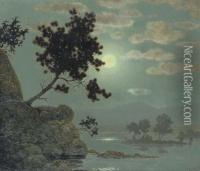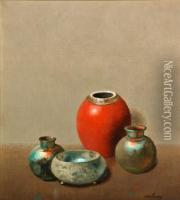Harry Wilson Watrous Paintings
Harry Wilson Watrous was an American painter known for his trompe-l'oeil still lifes and genre paintings. He was born on September 17, 1857, in San Francisco, California. Watrous developed an early interest in art, and after moving to New York, he studied at the National Academy of Design under the tutelage of Lemuel Wilmarth.
Watrous's initial artistic focus was on genre scenes, often with a touch of humor and whimsy. He became recognized for his precise and detailed approach to painting. Watrous also had a penchant for the trompe-l'oeil technique, a style that uses realistic imagery to create the optical illusion that depicted objects exist in three dimensions. He was particularly known for his paintings of ‘Honesty’ the seedpods of the Lunaria plant, which he rendered with such skill that they appeared to be actual objects affixed to the canvas.
In 1881, Watrous went abroad to further his studies and spent significant time in Paris, where he was influenced by the work of various French artists. He was especially drawn to the style and techniques of William-Adolphe Bouguereau and Tony Robert-Fleury. During his time in Europe, Watrous exhibited at the Paris Salon, receiving commendations for his work and building his reputation as a skilled painter.
Upon his return to the United States, Watrous became a member of the National Academy of Design and later served as its president. He was also a member of the American Watercolor Society and the Society of American Artists. Watrous continued to paint and exhibit his work throughout his career. His paintings were well-received, and he garnered numerous awards, including a gold medal at the Panama-Pacific International Exposition in 1915.
Watrous’s works are characterized by their clarity, delicate brushwork, and meticulous attention to detail. He had a unique ability to capture the textures and qualities of different materials, from the softness of flower petals to the sheen of glass or metal. Although he was most famous for his still lifes and trompe-l'oeil paintings, Watrous also created a number of portraits and landscapes throughout his career.
Harry Wilson Watrous passed away on August 12, 1940, in New York. Today, his works can be found in the collections of several prominent museums, including the Metropolitan Museum of Art in New York and the Smithsonian American Art Museum in Washington, D.C. His legacy endures as a skilled practitioner of trompe-l'oeil painting and as an important figure in American art history during the turn of the 20th century.
